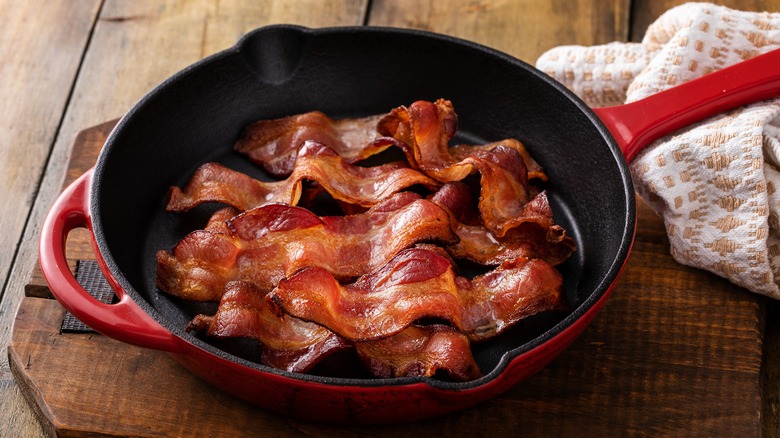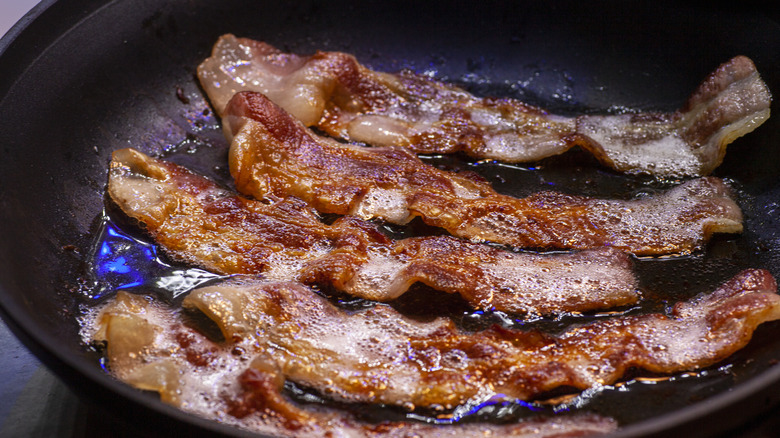The Temperature Mistake That Results In Gummy Bacon
Whether it's nestled on a BLT or part of a hearty breakfast, one of the most appealing aspects of bacon is the crunch when you sink your teeth into it. However, far too many home cooks settle for limp, soft bacon instead. Little do they know that a simple tweak to their cooking process can do wonders to allow even beginner bacon cooks to produce crispy, delicious strips every time.
It all comes down to temperature. Some choose to preheat the pan they plan to cook bacon in, getting it scorching hot before laying down the strips. While this technique is common when searing steaks, chicken, fish, or other items, it's a crucial error with bacon. It even beats using the wrong pan and forgetting to add some water to the skillet, which are among the biggest mistakes everyone makes when cooking bacon.
The key is starting with a cold pan. When fatty bacon hits an ultra-hot surface, it seizes up, turning to that unpleasantly gummy texture. In addition, bacon added to a hot pan curls and turns wavy, reducing the amount of surface area touching the pan and the overall crispness. The final result can often be a mixture of undercooked and burned bits that can turn off even the most dedicated bacon fans.
Avoiding that unpleasant texture
Add the bacon to a cold pan and gently heat it from medium-low upward to your desired level. This allows the fat to gradually render out of the strips and into the pan, leaving a crunchy, ideally cooked final product.
Some chefs might argue the true mistake is frying bacon in a pan at all. Many professional and amateur cooks alike feel the best way to cook bacon is actually in the oven, a hands-off technique that produces reliably cooked batches with less mess. Like with pan-cooking, starting with the bacon in a cold oven that gradually heats to the final temperature helps the fat render most effectively.
Of course, it's also possible to go too far in the opposite direction from a screaming hot pan. This includes misguided folks who try to make bacon in a slow cooker, which will dry out the bacon with long cooking times and prevent it from ever becoming crisp due to the low temperatures and a moist cooking environment. So, while it might seem counterintuitive, start your bacon in a cold pan the next time you're frying up a batch. By altering this one small step, you'll produce crispier bacon than ever before.

